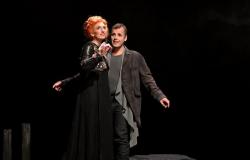“I paint because I like allotment gardens. » This statement, taken from the backplates of the catalog dedicated to Jean-René Hissard (“Why I paint”, Éditions du Zarpataedo), is surrounded by other assertions which explore, on the same diagram, the motivations which are sometimes crazy, light, serious , caustic or iconoclastic, but always sincere, which animate this painter.
“I paint because I like allotment gardens. » This statement, taken from the backplates of the catalog dedicated to Jean-René Hissard (“Why I paint”, Éditions du Zarpataedo), is surrounded by other assertions which explore, on the same diagram, the motivations which are sometimes crazy, light, serious , caustic or iconoclastic, but always sincere, which animate this painter.
Born in 1943, Jean-René Hissard studied literature before taking the entrance exam to the School of Fine Arts in Paris. “I went there one afternoon, I understood that it didn’t suit me. I never set foot there again, except in 68.” He continued to paint and began to show his work, at the Paris Biennale and the Salon de la Jeune Peinture.
“What fascinated me was to see that people considered completely ordinary were capable of producing extremely elaborate things”
“At the beginning of the 70s, I had to find something else on the side,” recalls the artist. This is how he landed a position in Belfort in a cultural action center. “I led expression workshops. I helped participants find ways to express something personal. » Passionate about this mission, Jean-René Hissard discovered these plots of land on the outskirts of the city combining improvised constructions and market gardens: allotment gardens. “What fascinated me was how people who were considered completely ordinary were capable of producing extremely elaborate things. »
Clothilde Bechou
” The survivor “.
Met
Determining, this epiphany leads to meetings with the occupants of these daring flowerbeds. Photos taken and recordings of interviews will be the subject of an exhibition. It prefigures the one he will show for “Les Singuliers de l’art”, presented at the Museum of Modern Art of the City of Paris in 1978 after his visit to the Creusot Montceau ecomuseum where the initial utopia of these “museums without collection, without visitors but with inhabitants” intersects with its encounter with the region’s former mining towns. This same interest in amateur practices took him to the Parisian suburbs (Mantes-la-Jolie, Fresnes, Saint-Denis).
Clothilde Bechou
“Paris is over.”
The other inspiration
“In my work as a painter, I have two sources of inspiration,” explains Jean-René Hissard. To this “popular art” discovered during his wanderings, this inventive and invigorating heritage which deviates from the norms and galloping standardization, another influence is added: that of the great painters of yesteryear. Mainly until Courbet and his “burial at Ornans”: the first to depict ordinary people in monumental dimensions (usually reserved for noble genres). These influences nourish a pictorial and graphic creation, a rich ensemble of which is exhibited at BAG in Bordeaux. Affiliated with Bad Painting (literally “bad painting”), it is figurative, readily baroque, seditious, integrating heterogeneous materials, excessive impasto and chromatic charges. An ode to this indomitable “popular”.
“Jean-René Hissard – Paintings for the people”, until May 18, BAG Bakery Art Gallery, 44, rue Saint-François, in Bordeaux. Tuesday to Saturday from 11 a.m. to 7 p.m. Free. bakeryartgallery.com








